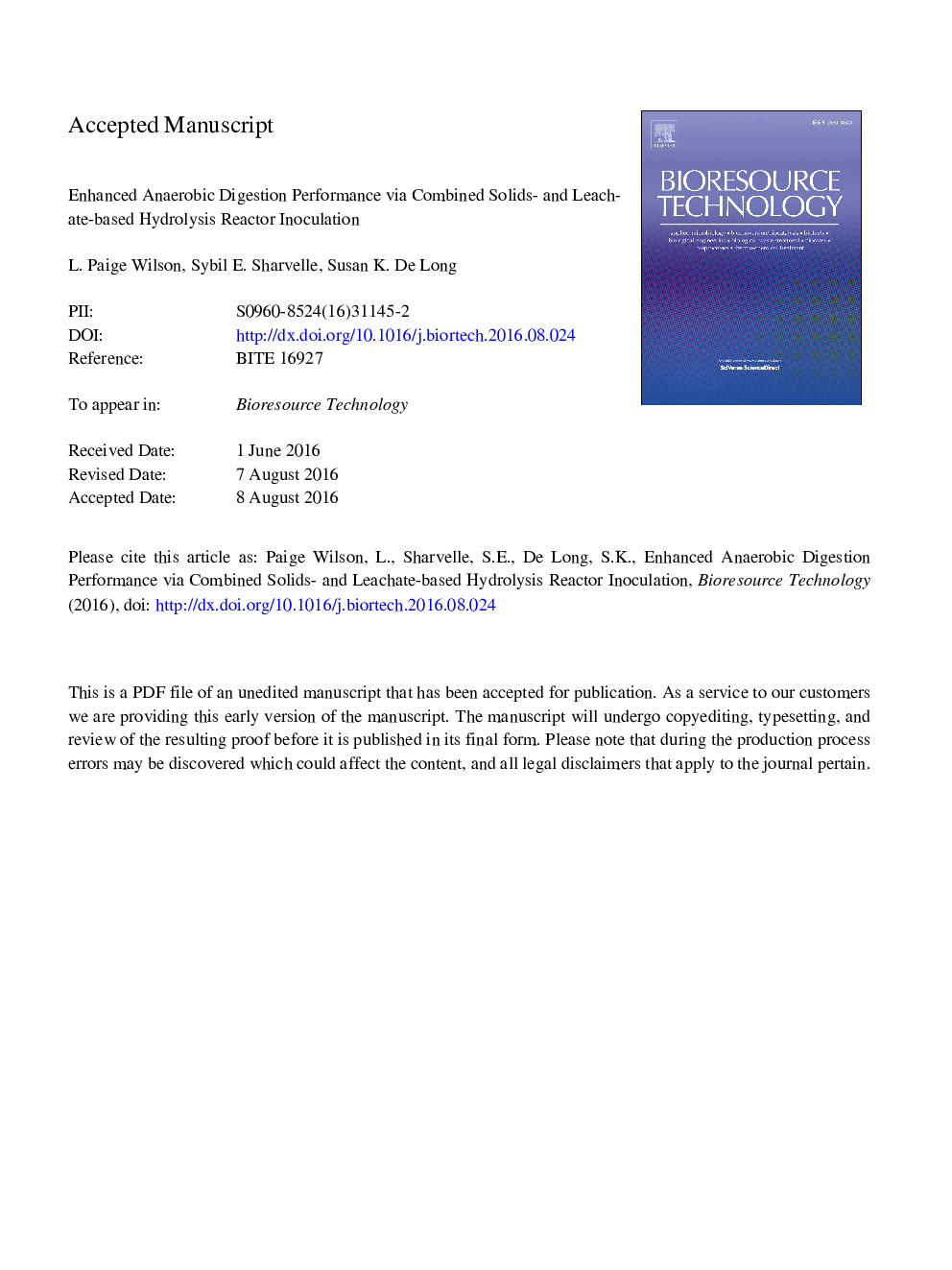| Article ID | Journal | Published Year | Pages | File Type |
|---|---|---|---|---|
| 7069585 | Bioresource Technology | 2016 | 40 Pages |
Abstract
Suboptimal conditions in anaerobic digesters (e.g., presence of common inhibitors ammonia and salinity) limit waste hydrolysis and lead to unstable performance and process failures. Application of inhibitor-tolerant inocula improves hydrolysis, but approaches are needed to establish and maintain these desired waste-hydrolyzing bacteria in high-solids reactors. Herein, performance was compared for leach bed reactors (LBRs) seeded with unacclimated or acclimated inoculum (0-60% by mass) at start-up and over long-term operation. High quantities of inoculum (â¼60%) increase waste hydrolysis and are beneficial at start-up or when inhibitors are increasing. After start-up (â¼112Â days) with high inoculum quantities, leachate recirculation leads to accumulation of inhibitor-tolerant hydrolyzing bacteria in leachate. During long-term operation, low inoculum quantities (â¼10%) effectively increase waste hydrolysis relative to without solids-derived inoculum. Molecular analyses indicated that combining digested solids with leachate-based inoculum doubles quantities of Bacteria contacting waste over a batch and supplies additional desirable phylotypes Bacteriodes and Clostridia.
Keywords
T-RFLPNon-metric multi-dimensional scalingOrganic fraction municipal solid wasteTANMDSOFMSWOLROTUAmmoniaInoculationAcclimationSalinityLeachateTerminal restriction fragmentsterminal restriction fragment length polymorphismOrganic loading rateAnaerobic digestionoperational taxonomic unitMulti-stagetotal ammonia nitrogen
Related Topics
Physical Sciences and Engineering
Chemical Engineering
Process Chemistry and Technology
Authors
L. Paige Wilson, Sybil E. Sharvelle, Susan K. De Long,
